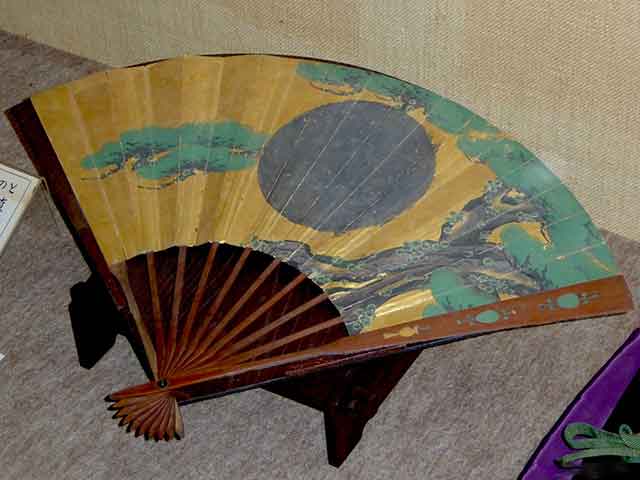
Sanada Yukimura Nobushige's war fan, also known as "gunpai" in Japanese, is a remarkable piece of history that embodies the bravery and skill of a legendary samurai warrior. This fan was an essential part of Sanada's armory during the Warring States period in Japan and was believed to have been used by him during some of his most famous battles.
Sanada Nobushige, also known as Sanada Yukimura, was a samurai warrior who lived in the late 16th and early 17th centuries in Japan. He was one of the most talented and feared warriors of his time and was known for his incredible bravery, skill, and tactics on the battlefield. Sanada was a master of several weapons, including the spear, sword, and bow, but he was particularly famous for his use of the war fan.
The war fan was a unique weapon used by samurai warriors during the Warring States period in Japan. It was made of wood or metal and had a handle that was decorated with intricate designs. The fan was usually made of several blades that could be opened and closed, making it a versatile weapon that could be used for both offense and defense. The war fan was also lightweight, making it easy for the warrior to carry it around and use it in battle.
Sanada Nobushige's war fan was particularly unique because it had a special emblem on it. The emblem was a red sun with sixteen rays, which symbolized the sixteen provinces of Japan that Sanada had conquered. This emblem made the fan a powerful symbol of Sanada's bravery and military prowess and struck fear into the hearts of his enemies.
Sanada Nobushige's war fan was used in several famous battles, including the Siege of Osaka in 1614-1615. During this battle, Sanada and his men were vastly outnumbered by the enemy, but they managed to hold their ground for months. Sanada used his war fan to great effect, deflecting enemy arrows and attacking his foes with deadly precision.
Despite his bravery and skill, Sanada Nobushige was eventually defeated in the Siege of Osaka, and he died in battle. His war fan was later acquired by Tokugawa Ieyasu, the victorious general, who recognized the fan's historical significance and ordered it to be preserved as a national treasure.
Today, Sanada Nobushige's war fan is considered one of the most important artifacts of the Warring States period in Japan. It is housed in the Tokyo National Museum, where it is displayed alongside other historical artifacts from Japan's rich cultural heritage.
In conclusion, Sanada (Yukimura) Nobushige's war fan is a unique and remarkable piece of history that embodies the bravery and skill of one of Japan's most legendary samurai warriors. This fan is a powerful symbol of Sanada's military prowess and is an important artifact of Japan's rich cultural heritage.
See also
-
Nagahama Castle
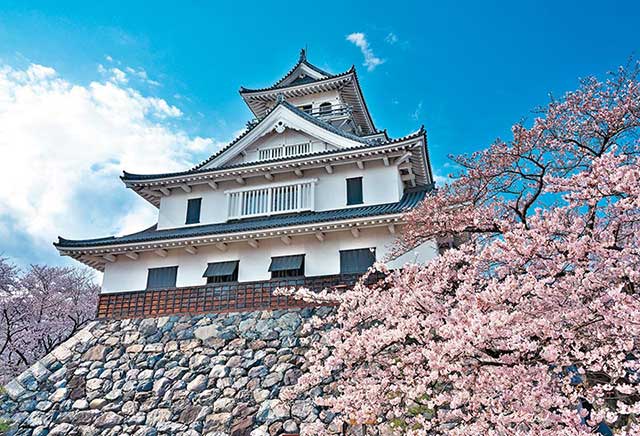
Hashiba, later known as Toyotomi Hideyoshi, received Odani Castle and the surrounding lands from Oda Nobunaga after the defeat of the Azai clan. However, Odani Castle was located high in the mountains, which made it poorly suited for the effective administration of the territory. For this reason, in 1575 Hideyoshi began constructing a new castle in the village of Imahama on the shore of Lake Biwa. Taking the character naga from Nobunaga’s name, he renamed both the village and the new castle Nagahama.
-
Kokura Castle
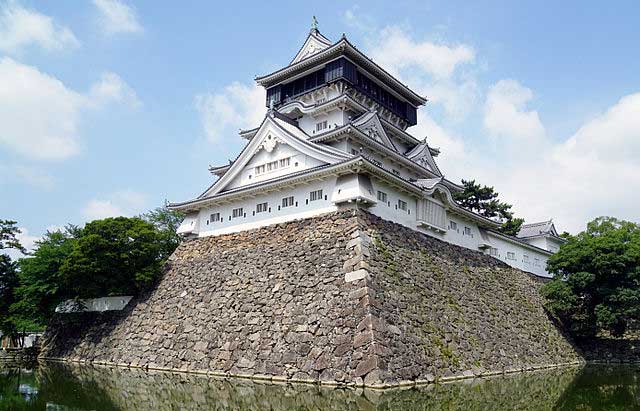
Kokura Castle is traditionally considered to have been founded by Hosokawa Tadaoki (1563–1645), although by the time the Hosokawa clan came to control these lands, the fortification had already existed since at least 1569 and was most likely built by members of the Mori clan.
-
Ikeda Castle
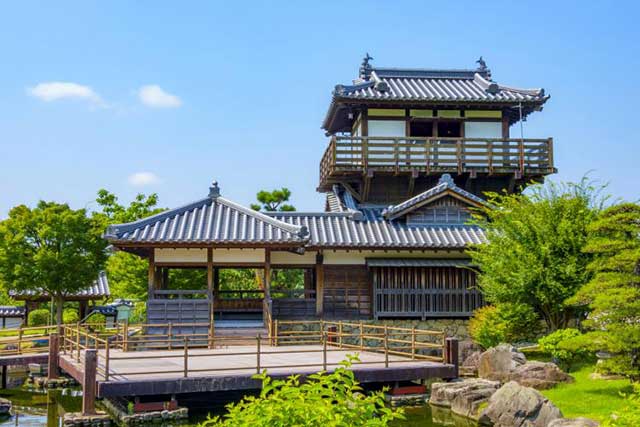
In 1334, Ikeda Noriyoshi built a small fort on this site, which over time was repeatedly expanded and rebuilt. During the Ōnin War of 1467–1477, the Ikeda clan supported the Western Coalition. As a result, Ikeda Castle was attacked and captured by the forces of the Eastern Coalition, but it was soon recaptured, allowing it to avoid serious destruction.
-
Aizu-Wakamatsu Castle
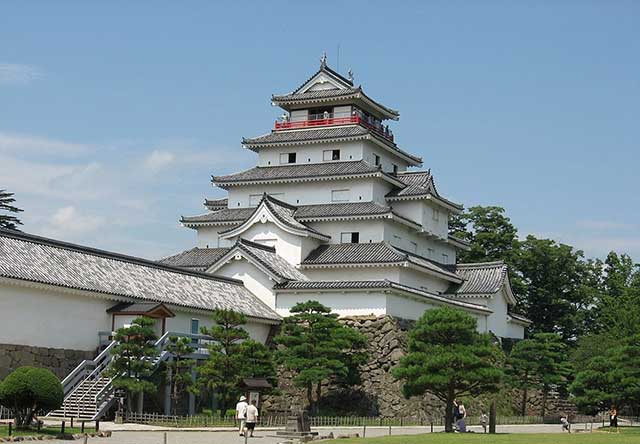
Aizu-Wakamatsu is the most powerful and at the same time the oldest castle in the Tōhoku region in the north of Honshu Island. Its history begins in the 14th century and is closely connected with the Ashina clan, whose members claimed descent from the legendary Taira family.
-
Maruoka Castle
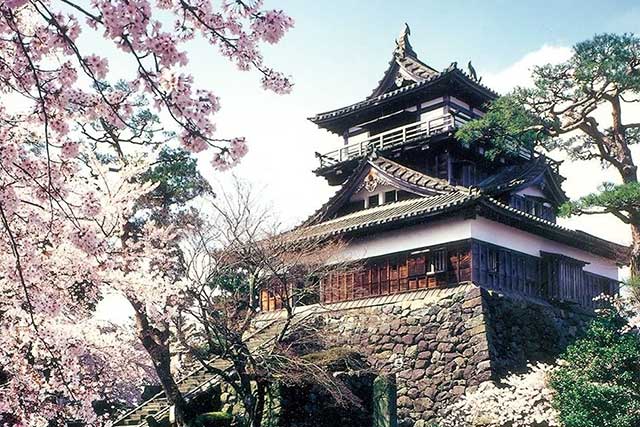
Maruoka Castle is located in the central part of the former city of Maruoka, which is now part of the city of Sakai. This area lies in the northeastern part of Fukui Prefecture. The castle was built on the bank of the Kuzuryu River, on the side opposite Fukui City, which once served as the administrative center of the former Echizen Province. Thanks to its location, Maruoka held significant strategic importance, as it controlled two major routes at once: the Hokurikudo highway leading from Kaga Province and the Mino Kaido road connecting these lands with Mino Province.
-
Marugame Castle
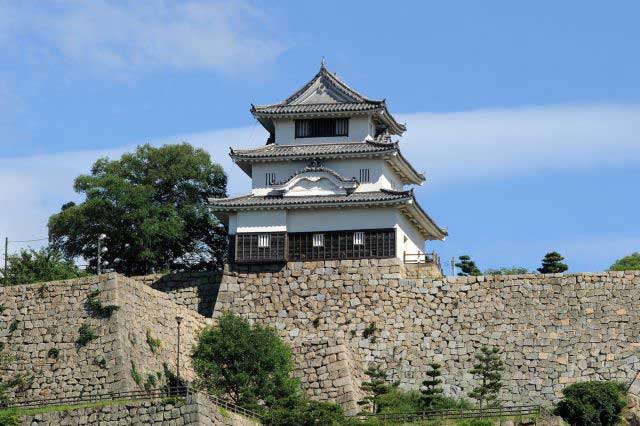
Marugame is part of the so-called “Authentic Dozen,” a group of twelve castles whose donjons have survived to the present day without major reconstructions since the Edo period.
-
Iyo Matsuyama Castle
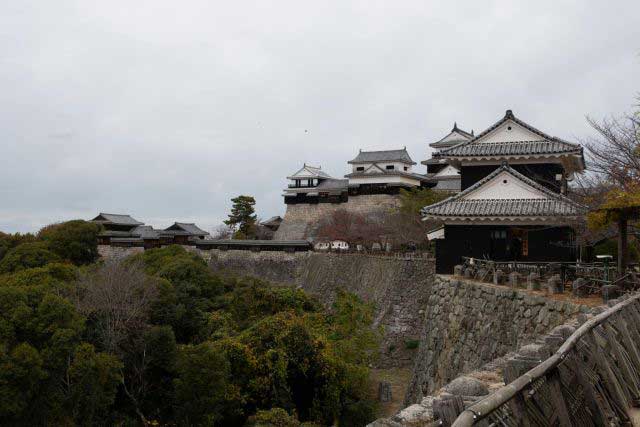
Historically, the center of Iyo Province—corresponding to today’s Ehime Prefecture on the island of Shikoku—was the city of Imabari, while the Matsuyama area was regarded as an agricultural hinterland with broad plains and low hills. During the Muromachi period, the central part of the province was governed by the Kano clan from Yuzuki Castle. With the onset of the Sengoku period, however, this clan lost its former influence and was forced to survive in the shadow of the more powerful Mori and Chōsokabe clans. After Toyotomi Hideyoshi’s forces conquered Shikoku in 1587, the northern part of Iyo Province was granted to Fukushima Masanori, one of the so-called “Seven Spears of Shizugatake.” In 1595, Masanori was transferred to Kiyosu Castle, and the lands around Matsuyama were given to another of the Seven Spears, Katō Yoshiaki, who received Masaki Castle and an income of 60,000 koku of rice.
-
Kanazawa Castle
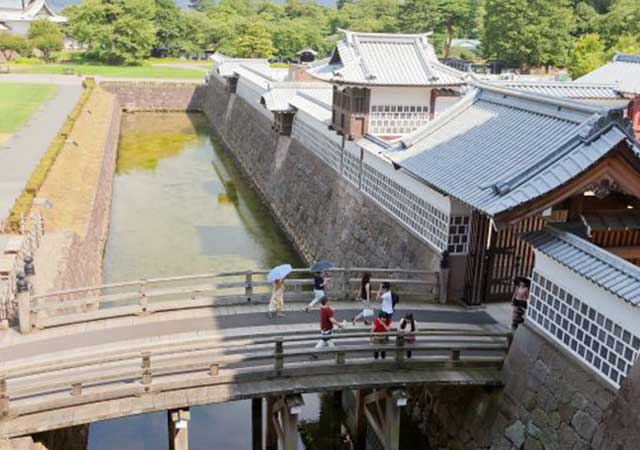
Construction of Kanazawa Castle began in 1580 on the orders of Sakuma Morimasa, a vassal of Oda Nobunaga. The castle was built on the site of the Ikko-ikki sect's Oyama Gobo temple, which is why it is sometimes called Oyama Castle. Morimasa managed to build several moats and begin construction of a castle town. However, after his defeat at the Battle of Shizugatake in 1583, he was executed, and ownership of the castle passed to Maeda Toshiie (1538–1599).

